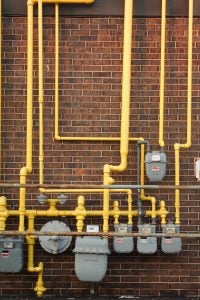 The New York Public Service Commission is taking decisive action to orient the state’s utilities towards a clean energy future, consistent with the Climate Leadership and Community Protection Act. In two new orders, the commission established a collaborative long-term planning process for gas utilities, put in place a framework for greenhouse gas emissions reporting for all New York utilities and directed a statewide study to assess the impacts of transitioning away from the use of natural gas.
The New York Public Service Commission is taking decisive action to orient the state’s utilities towards a clean energy future, consistent with the Climate Leadership and Community Protection Act. In two new orders, the commission established a collaborative long-term planning process for gas utilities, put in place a framework for greenhouse gas emissions reporting for all New York utilities and directed a statewide study to assess the impacts of transitioning away from the use of natural gas.
Gas planning gets underway
Under the new planning paradigm approved by the commission, each gas utility in New York must propose a long-term plan with detailed demand and supply projections, and with a focus on reducing natural gas demand and prioritizing non-pipes alternatives. The plans will be subject to public comment and review over the next three years, with each plan taking about eight months to finalize.
This is an essential step forward to make gas utility programs more transparent and accountable. Successful long-term planning will prevent utilities from relying on outdated assumptions, such as assuming continuous growth in gas demand, that could lock in infrastructure investments and hinder New York from meeting its climate goals.
Major components of the new planning framework include:
- Emphasizing transparency and public participation — The order recognizes the importance of a collaborative public process and directs utilities to be forthcoming with information. The commission must follow through on this commitment to facilitate public participation — for example, by instituting a process for information discovery as needed.
- Community-based approaches — Utilities must determine how disadvantaged communities can benefit from non-pipes alternative projects including energy efficiency and electrification, and utilities are encouraged to take a neighborhood approach to leak-prone pipe removal efforts.
- Tracking greenhouse gas emissions — Consistent with EDF recommendations, the order requires utilities to report the GHG emissions associated with all supply and demand-side solutions associated with each proposed scenario.
- Avoiding stranded assets — To avoid unnecessary investments in gas infrastructure, the order directs utilities to develop depreciation plans for gas assets and to assess the cost of new gas service line installations. In the coming months, the commission will need to review utility proposals and update its depreciation standards and 100-foot rule regulation, which covers the cost of adding service for new customers, to ensure maximum alignment with climate policy.
Accounting for greenhouse gas emissions
In the greenhouse gas reporting order, the commission acknowledges the need to “to track and routinely assess the utilities’ GHG emissions in the state” through “clear and consistent statewide guidelines for GHG emissions reporting,” in order to fulfill its obligations under the law. This is a major step forward to ensure compliance of Section 7 of the CLCPA, which requires the commission to ensure that its decisions are consistent with New York’s greenhouse gas emissions reduction targets.
Utilities are now required to include a greenhouse gas emissions assessment of each specific investment, capital expenditure, program and initiative included in their rate filings.
However, it is critical that the commission and utilities employ accurate methodologies that fully capture upstream emissions and the high rates of leakage from gas pipelines and buildings. The commission and utilities should consider recommendations from the public in this process, such as the Gas Company Climate Planning Tool developed by M.J. Bradley & Associates for EDF.
Creating a uniform system for utilities to track and report their emissions will allow companies, regulators and the public to understand how progress is being made — or when it isn’t — towards New York’s climate targets.
What comes next
There is plenty of work left to ensure that New York gas utilities get on track to harmonize their investments with state climate policy. In the coming months, the utilities will be filing cost estimates of gas service line installations, analyses of pathways to depreciate (or pay off over time) their existing gas assets, and proposed criteria for non-pipes alternatives. The commission and its staff should carefully review these proposals, which will shape the development of long-term plans over the next several years, to ensure alignment with climate targets. Furthermore, facilitating public participation will be essential to ensure a meaningful outcome from this process.
As other states recognize the need to align gas utility regulation with climate policy, regulators should consider New York’s actions in designing their own gas planning reforms. Greenhouse gas emissions tracking and consideration of demand-side alternatives to infrastructure buildout are critical tools for holding utilities accountable for meaningful alignment of investment decisions with climate goals. Additionally, requiring utilities to work with stakeholders and meaningfully consider their input in creating their plans is an important step toward transparency and collaboration.









